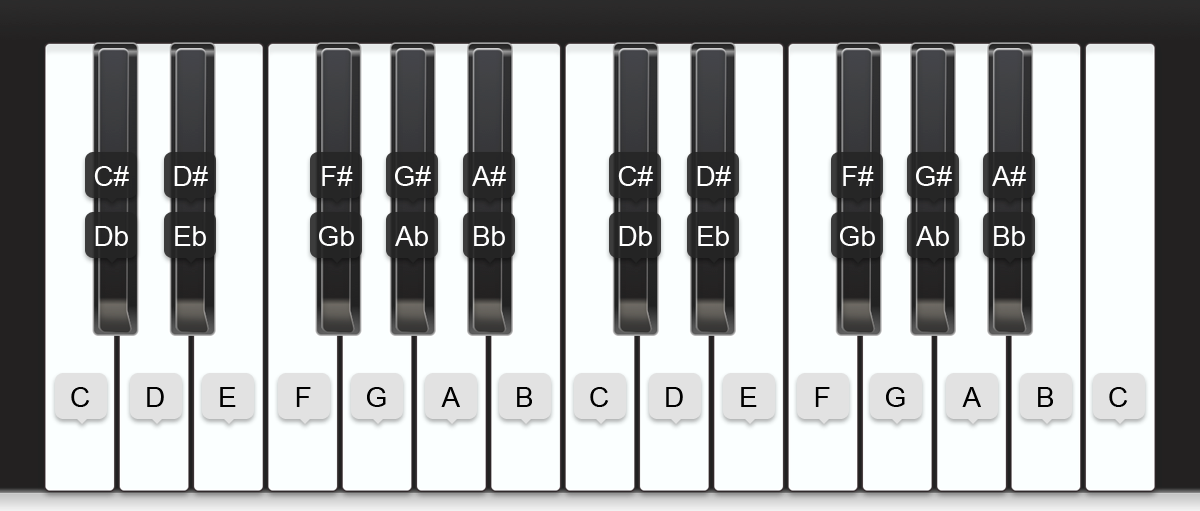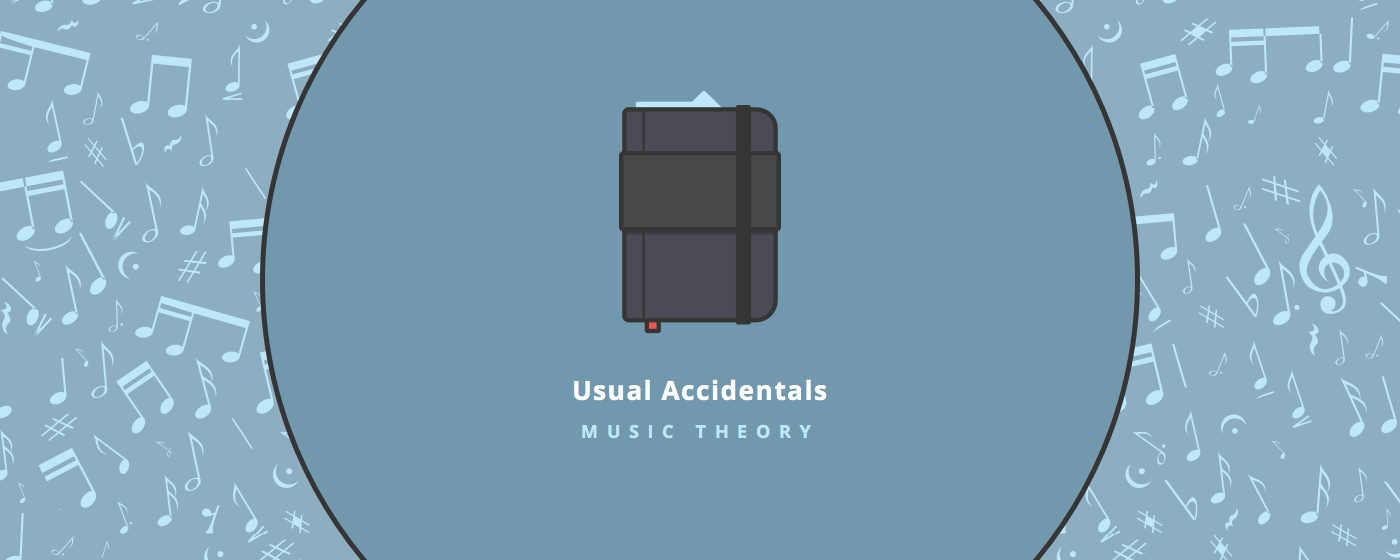Hi,
You may already have understood the way the symbols ♭ and ♯ behave !
We already saw these in the post about note names , distance between notes , and major scales construction.
Here is a detailed explanation.
Sharps

If you look at C♯ on a piano keyboard, you see that it is the closest key being on the right side of C. In other way , C♯ is a semitone (smallest distance between two notes) up C.
So we could say : If you take a natural tone - let's say C - and you add the symbol ♯ (sharp) right after it you are rising the original note by a semitone.
( natural tone = letter of the musical alphabet = white key )
Since you already know black keys names , everything seem logical :
- C♯ is a semitone above C
- D♯ is a semitone above D
- F♯ is a semitone above F
- G♯ is a semitone above G
- A♯ is a semitone above A
But there is more ! Following the same rule , we also have :
- E♯ is a semitone above E
- B♯ is a semitone above B
But we knew that F was a semitone above E , and C was a semitone above B.
We just discovered another way (not usual) to name F. Sometimes , we prefer to say E♯ instead of F.
We just discovered another way (not usual) to name C. Sometimes , we prefer to say B♯ instead of C.
Flats

If you look at E♭ on a piano keyboard , you see that it is the closest key being on the left side of E. In other way , E♭ is a semitone (smallest distance between two notes) down E.
So we could say : If you take a natural tone - let's say E - and you add the symbol ♭ (flat) right after it you are lowering the original note by a semitone.
Again, since you already know black keys names, everything seem logical :
- D♭ is a semitone below D
- E♭ is a semitone below E
- G♭ is a semitone below G
- A♭ is a semitone below A
- B♭ is a semitone below B
But there is more ! Following the same rule , we also have :
- F♭ is a semitone below F
- C♭ is a semitone below C
But we knew that E was a semitone below F , and B was a semitone below C.
We just discovered another way (not usual) to name E. Sometimes, we prefer to say F♭ instead of E.
We just discovered another way (not usual) to name B. Sometimes, we prefer to say C♭ instead of B.
Enharmonic
Enharmonic notes are notes that have the same pitch but have different note spellings , like E and F♭ , E♯ and F , B♯ and C , C♭ and B.
We already mention that at the end of this post.

Notation
When we want to rise up a note -let's say D- by a semitone, using the musical alphabet , we put the "♯" after the "D" : D♯
But when we want to rise up a note using musical notation (using a staff) we put the symbol ♯ before the note.
Accidentals over time
If, somewhere in a measure (I recommend that you read this post) , you put and accidental (let's say a sharp) on a note - let's say F- , all other F (situated on the same line or line space) after that one (that one included ) , and located in the same measure , are to be played a semitone above. If, later in the same measure, you want to come back to natural F, you have to place a natural symbol (♮) before it. Then , all F after that one (including that one) , situated in the same measure , will be played natural.
In the next measure , everything comes back to normal (whatever you did, writing a sharp , a flat , or a natural)
To clear up your mind , just listen to this example !
In the next article, we will discuss double accidentals.
Seb
